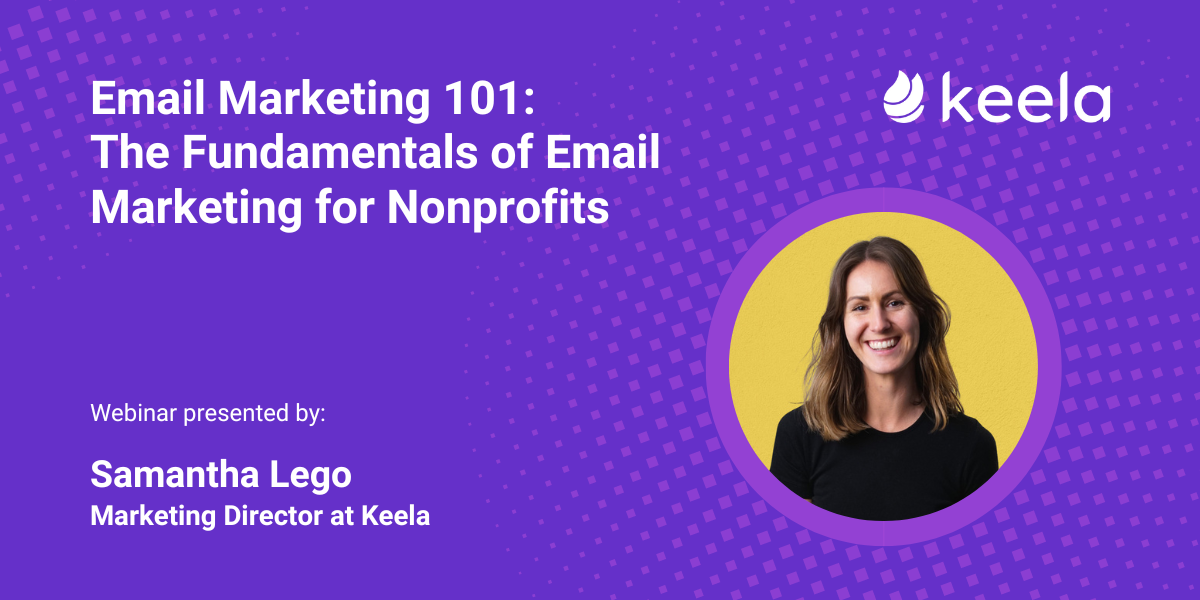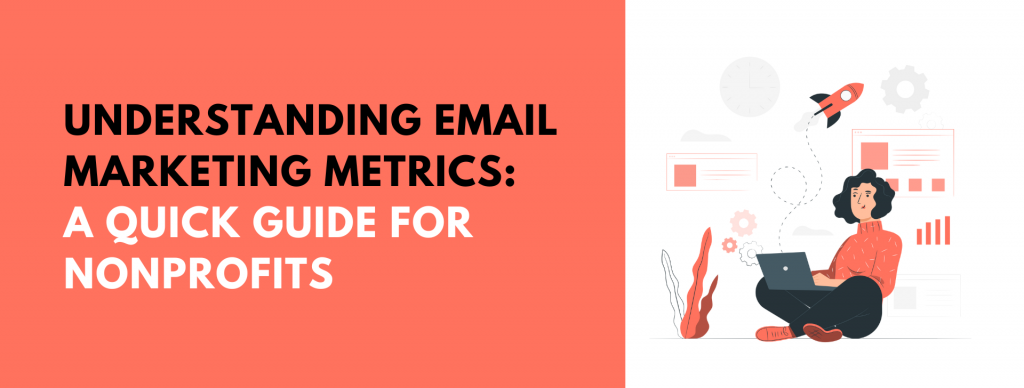Whether you’re trying to engage first-time donors or boost the generosity of recurring ones, one of the biggest pain points nonprofits have is getting their message heard.
With so many distractions competing for your donor’s attention, it can be hard to break through the chatter. That’s why we recommend going straight to the source with a tried and true method: Email.
Emails are a direct lifeline to your donors, reaching constituents in their homes, at work, or on their phones while they’re on the go. Not to mention they have one of the higher ROIs of any communications channel at $78 for every 1,000 emails sent.
So, if you’re looking to enhance your fundraising for Giving Tuesday and beyond without spending hours creating each email appeal, follow these top tips to get you set up for success.
4 quick tips for creating great fundraising emails
To be successful in your next fundraising campaign, you’ll need to deploy a mixture of creativity and data analysis. Your ultimate goal is to tell a story that speaks to your donors while measuring how effective that messaging is, so you can ensure you’re inspiring your donors to give.
Join this upcoming webinar, led by Keela, where you’ll learn best practices on how to quickly and effectively capture your reader’s interest, maximize fundraising dollars, and automate the process, so it takes less time to raise more. Register here.
Tip # 1: Craft a really good subject line
First impressions matter, which is why a subject line can make or break an email. In fact, 35% of email recipients open emails based on the subject line alone. You need a good subject line to catch a reader’s attention, stand out from a cluttered inbox, and be enticing enough to warrant a click.
While it’s not a perfect science, here are three ways to improve your subject lines.
Make it Descriptive: Be clear about what you’re trying to do. Your subject line should introduce the story that you’re telling in the body of the email. Subject lines that use all caps, symbols, and trigger words like FREE or BUY or MONEY more often than not end up in the spam folder.
Make it Short: Shorter subject lines typically perform better because more people are opening emails on mobile devices. So to avoid having your subject line cut off by smaller screens, it’s best practice to aim for 60 characters or less.
Make it Urgent: Encourage your audience to act right away. Using urgent language gives your readers a chance to take part in something that will solve an immediate need. For most, it’s worth a click to see whether the FOMO is worth it.
Tip #2: Focus on the need
Donors give when they know the value of their gifts. To communicate this impact, you need a strong fundraising offer. Your goal is to clearly communicate what a donation will accomplish. If you’re fundraising for an environmental organization, this could be something similar to: “A $20 donation helps plant 50 trees in the Amazonian forest”.
For example, charity: water writes: “Your $80.00 monthly donation can give 24 people clean water every year. 100% funds water projects.”
This is a good example of a fundraising appeal that is simple, digestible, and most importantly, impactful.
Tip #3: Get personal
While email subscribers may be your supporters, they’re also individuals who want to know that they are valued in your organization. From subtle touches, like sending your appeals from yourname@organization.com rather than info@organization.com (or even from the individual you’re telling the story about), to tailored content using donor segments, making your constituents feel heard is much easier than it sounds.
One of the quickest ways to add some customization to your next appeal is by using personalization codes. Also known as merge tags or custom fields, these are placeholders that get replaced by the relevant value.
For example, if you use a {{firstname}} code, “Hey {{firstname}}” will become “Hey Amirah”, automatically pulling the data from your CRM and letting you solicit at scale.
And it works.
Using personalization codes can increase your click rates by up to 41%. More importantly, it can generate donation amounts up to 6x times higher than generalized codes.
Remember, it’s not just fundraising appeals. You can send personalized emails for thank you letters, donation receipts, newsletters, organization updates, donation asks, and other touchpoints in the donor journey.
Tip #4: Track results
The previous tips are important, but the real indicator of success is in your metrics. You can tell a good email campaign from a bad email campaign by diving into the numbers.
Analyzing your data will allow you to hone in on your email marketing strategy. It’s not just about sending a good fundraising email, it’s about optimizing your strategy and perfecting your outreach as you continue to grow.
Want to see how your campaigns are fairing? Use this Guide to Email Marketing Metrics to gain an understanding of five key email marketing metrics and how they work together to help you craft meaningful email content that inspires.
For more handy hints and best practices on maximizing your next fundraising appeal, don’t forget to register for the webinar here.
Samantha Lego, a storyteller by nature and an organizer by inheritance, Sam enjoys crafting meaningful content equally as much as colour coding spreadsheets. As the Marketing Director at Keela, a Canadian Donor Management Software (CRM), she is always on the hunt for new and innovative ways to educate nonprofits and help them maximize their impact.









